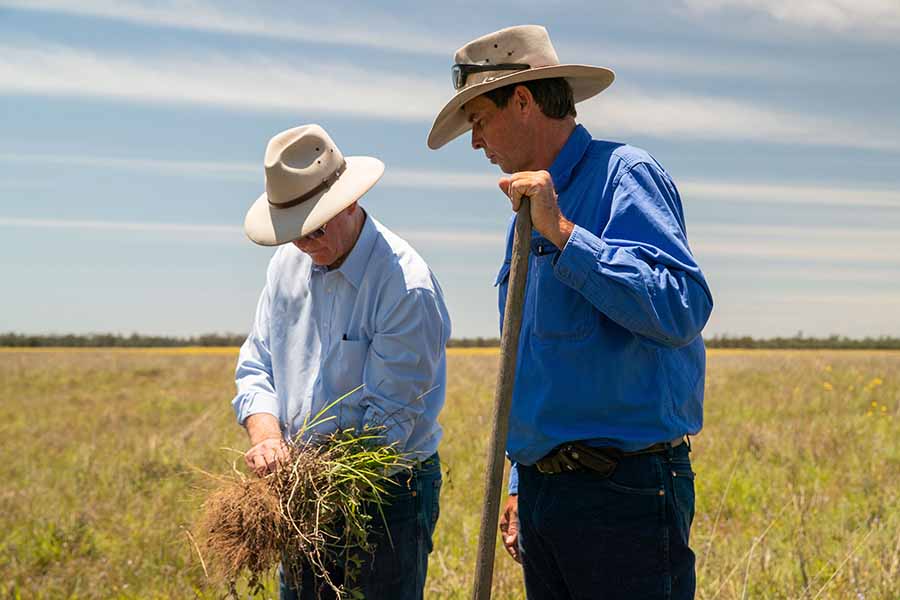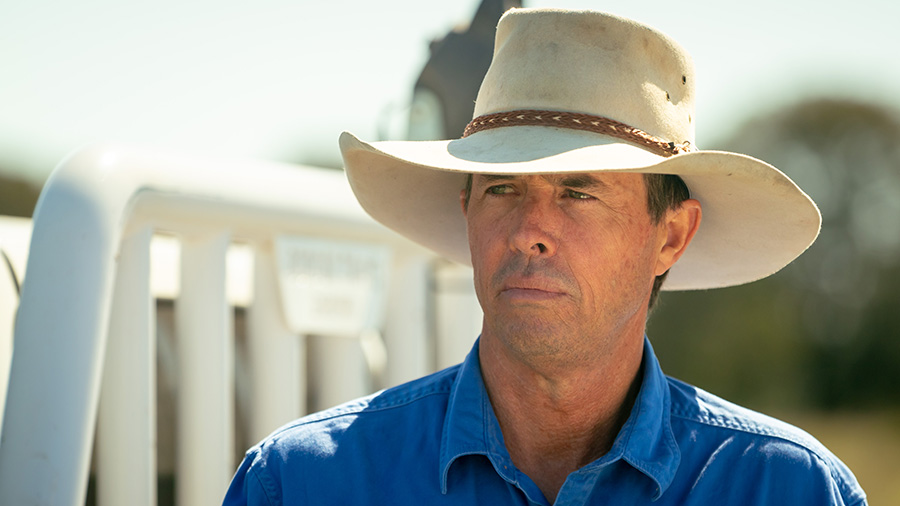Several years of using time-controlled grazing methods resulted in significant improvements to the Rexton property. As their primary operation became more successful the Archers purchased an adjoining property, Rainmore, in 2016. At the time of purchase, it was in a similar condition to the original state of Rexton. The Archers immediately began employing the same methods to this new property to maximise its productivity.
 Both properties have seen marked improvements in ground coverage and carrying capacity.
Both properties have seen marked improvements in ground coverage and carrying capacity.
Paddocks on both properties have seen a marked and obvious improvement in ground coverage and amount of feed available. Visually, the paddocks look significantly different from their original state with greater species diversity and overall amounts of coverage. Desired grasses, which were previously sparse, are now the dominant species. Mitchell Grass, a native grass species which hadn't been seen in the area for decades is now present in large areas.
The improvements to ground coverage and vegetation species diversity has resulted in Rexton's carrying capacity increasing from 8 up to 23 Stock Density Units/Ha/100mm rain, an almost three-fold increase.
One key improvement was in drought resilience. After 2018 and 2019 - two of the driest years on record - the Rexton property, which had been managed using time-controlled grazing for many years, fared noticeably better than Rainmore, which had been managed using the same methods for only a short time.
With the greater ground cover and resultant soil improvements, the property's water utilization has improved significantly with much less runoff. When runoff does occur, the water is clear and does not carry away topsoil; this can be clearly seen during significant rain events where clear run-off from the property can be seen entering local creeks.
Overall, the soil structure, fertility, biodiversity, and water holding capacity of the land has been significantly improved.
Overall, the soil structure, fertility, biodiversity, and water holding capacity of the land has been significantly improved. Now that the infrastructure has been put in place, the management of this system is relatively simple, with only a few hours a day needed to move the cattle.
After investing approximately $220 per hectare to set up Rexton's infrastructure, the current annual return is $48 per hectare. It took around 7 years, which included 2 years of drought, for this investment to be returned.
In addition to the increased resilience and profitability of both properties, Archer Pastoral are participating in one of the largest carbon soil sequestration test projects in the country. So far, findings have indicated that the time-controlled grazing method adds significant amounts of carbon to the soil. The selling of carbon credits will allow the business to have additional income, which will provide additional financial stability. Other income opportunities that are likely to be available in the longer term include biodiversity credits, which can be sold to buyers who are required to offset vegetation clearances in the same region.
Tom now provides consulting services to other pastoralists, advising fellow graziers so they can implement the methods that have worked on his properties. Tom and Antoinette's children are now studying agriculture and business at university. The family is looking forward to a bright future in agriculture with their business set up to be resilient, sustainable and profitable.





